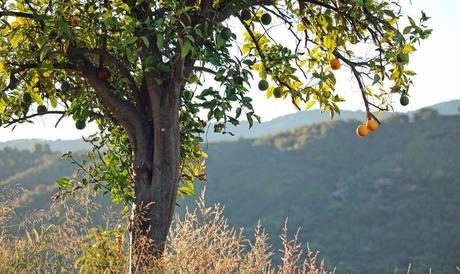
Ripening Fruit by Melina Meza
Here's what I have come to know as a fairly universal contemporary problem: many of us are a bit too tough on ourselves. We criticize our looks, our thoughts and emotions, our progress on the spiritual path, our practice quantity and quality. And the fact is that this is not helpful. But if we add tenderness and kindness to our outlook, vocabulary, thoughts and emotions, we can loosen the unhealthy grip of the overactive critic and relax into our lives and being a little bit more.Just to inspire and remind you: One of the goals of practice, besides alleviating suffering, is to be in the present moment. When you bring yourself into your body, you are in the present. When you absorb the natural beauty of the sky, you are in the present. When you hug someone you love, you can be in the present. There is plenty of beauty in the present—anchor yourself in that.1.33 By cultivating attitudes of friendliness toward the happy, compassion for the unhappy, delight in the virtuous, and disregard toward the wicked, the mind-stuff retains its undisturbed calmness. —translation from The Yoga Sutras of Patanjali by Sri Swami SatchidanandaJack Kornfield says, “Buddhist texts describe compassion as the quivering of the heart in the face of pain, as the capacity to see our struggles with ‘kindly eyes.’” These kindly eyes allow for some faltering, some forgetting, some mistakes, and gently remind us to start again.Gripping onto thoughts, feelings or anywhere in the body just causes discomfort and resistance. What we resist will persist. If we can soften around displeasure, discomfort, and the occasional raw mistake, we can flow a bit more into the movement of life. Movement implies softness; nothing moves very far in constricted areas or very easily through tight places. Of course there's a distinction between too tight and too loose, which was famously brought to light by the Buddha in the story of the sitar player. The musician asked him, “Should I maintain tight controls on my mind during meditation or should I let it flow?” The Buddha asked, “How do you tune your instrument?” The sitar play said, “If I tune the strings too tightly, they break. If they are too loose, no sound comes out.” “Just so,” replied the Buddha, “you should hold your mind in meditation.” If we are too loose with ourselves, we won't practice or even attempt to be mindful—that would require too much effort. On the other hand, if we are too tight with ourselves, we create tension and guilt, and will probably eventually give up on practicing.If we see only love and light, it’s the same issue, so we need to be aware of spiritual bypassing and denial for sure. But, especially as we mature, in years and in practice, acceptance and the choice to not increase suffering but actively decrease suffering is preferable. As Buddhist teacher Sylvia Boorstein wonderfully puts it "Life is painful. Suffering is optional."Remember that a practice has room for creativity. Play around from time to time and see what the results are. Rigidity in form is not always the answer; some of us need a little freedom to experiment to find out which technique works for us, depending on our current situation, mood, state of health, age, and so on. So a creative practice might include walking in the woods or by the beach, or reading some poetry to inspire the next session of meditation or asana. Practicing restoratives for an hour has become one of my favorite ways to meditate in my body. Tenderness. Kindness. Creativity. Spiritual friends and teachers, the ingredients of a great life being lived as it is offered, not too loose or tight, but being with what is—kindly.

